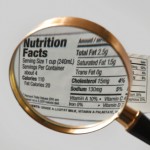 Nutritional analysis, food labels for the U.S. and Canada are some of the most popular topics from Food Label News, a monthly e-newsletter about what matters in food labels (www.foodlabels.com/newsletter).
Nutritional analysis, food labels for the U.S. and Canada are some of the most popular topics from Food Label News, a monthly e-newsletter about what matters in food labels (www.foodlabels.com/newsletter).
As many are aware, it is not possible to have food labels that satisfy requirements in both countries. While both the U.S. and Canada participate in Codex, the international body that provides guidance on food safety and food labels, each country is responsible for its own set of regulations for food labels. Unfortunately for those involved with developing food labels, these regulations are not co-developed.
Preparing nutritional analysis, food labels requires more than ultimately adding French to a U.S. label.
Take a look at a sampling of some of the key differences on nutritional analysis, food labels between the U.S. and Canada. Each country has different requirements. “Nutrition Facts Panels” in the U.S., “Nutrition Facts Tables” in Canada – ah, the differences begin.
• Nutrition Facts side-by-side comparison – The countries require different formatting and have several other key differences such as “Servings Per Container” and “Daily Values” footnote are required on U.S. labels only. While bilingual (English/French) is an obvious Canadian requirement, there are several other country-specific requirements that often result in different values for the same formulation.
• Rounding rules – In Canada, trans fat has tighter reporting requirements than in the U.S., for example.
• Units for reporting nutrients – U.S. uses International Units (IU) for Vitamin A whereas Canada uses Retinol Equivalents (RE), for example.
• Daily Values for nutrients – Differences for example in Vitamin C and Iron
• Nutrition/health claims side-by-side comparison – Canada defines “source of” as 5% or more of Daily Value but in the U.S. this is an undefined claim that cannot be used, for example.
• Ingredients side-by-side comparison – For example, baking powder requires a parenthetical listing of sub-ingredients in the U.S. but not in Canada.
• Allergens side-by-side comparison – U.S. has required “Big 8″ allergen labeling for packaged foods. Canada’s allergen labelling regulations expand beyond U.S. requirements to target not only food allergies, but also celiac disease and sulfite sensitivity.
• Net Contents statement – 4 oz (113g) note no space before the “g” in the U.S., whereas it appears as 113 g with a space in Canada.
For those developing food labels, it’s fair to beware. The differences extend beyond labeling to formulation. For example, not every ingredient allowable in the U.S. is also allowable in Canada and vice versa; food colors can also be an issue.
 About the author – Karen C. Duester
About the author – Karen C. Duester
President of Food Consulting Company
Karen Duester founded Food Consulting Company in 1993 to deliver nutrition analysis, food labeling and regulatory support to ensure 100% compliance with FDA regulations. With over 1,500 clients worldwide, Food Consulting Company functions as the virtual food label department for start-up and established food manufacturers, distributors, food importers, brokers, and restaurateurs.
The company’s promise is to deliver accurate, timely service providing everything that’s needed to go from recipe to retail – all with the confidence that it’s done right. Company information and a free email newsletter are available at http://www.foodlabels.com